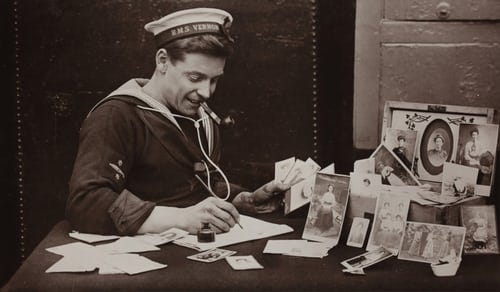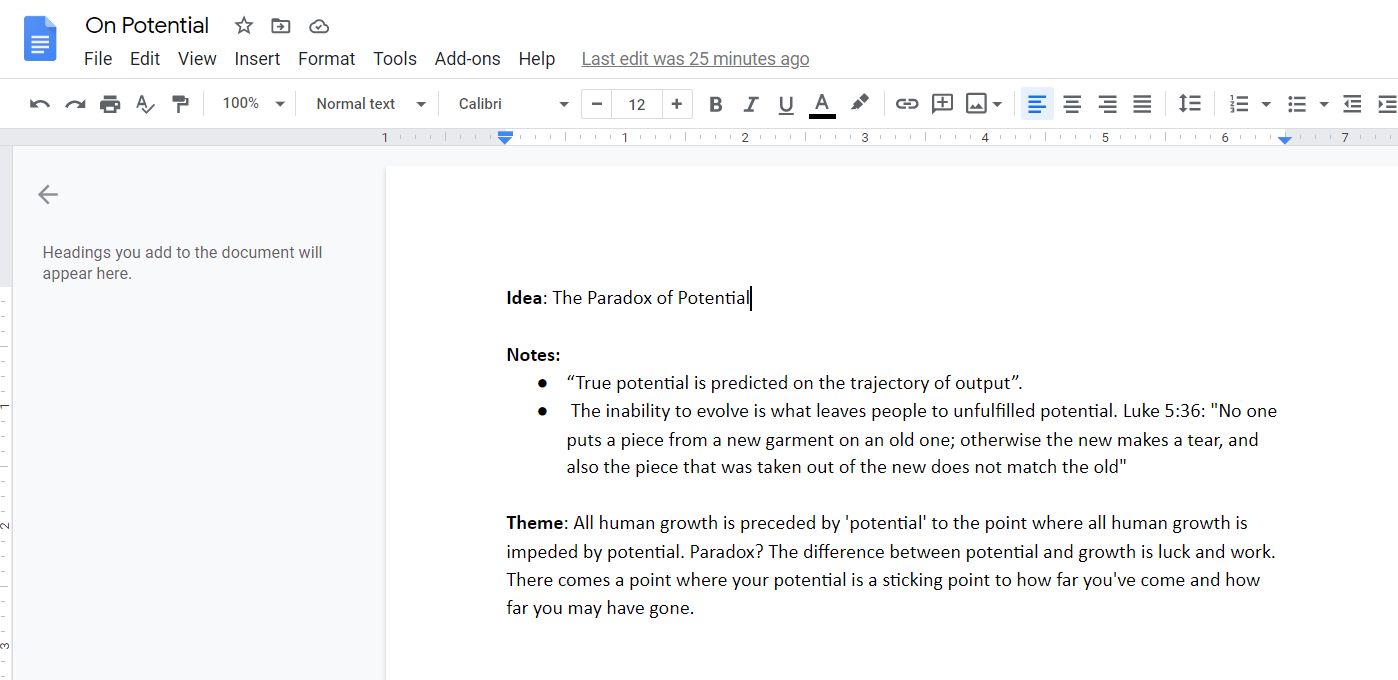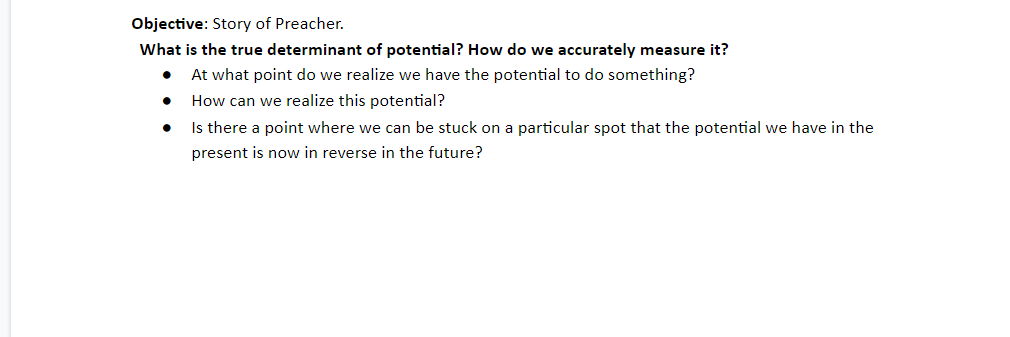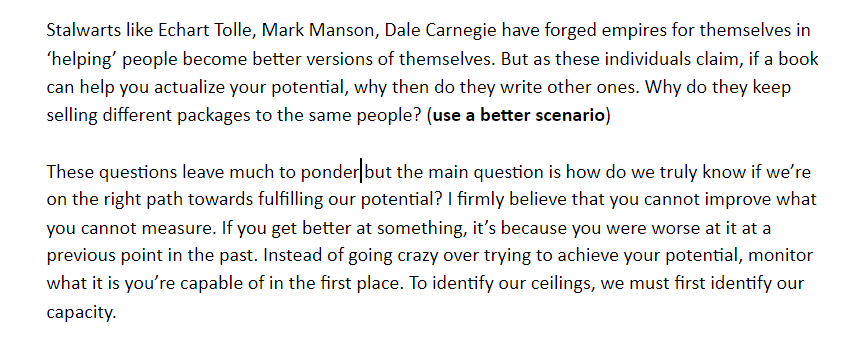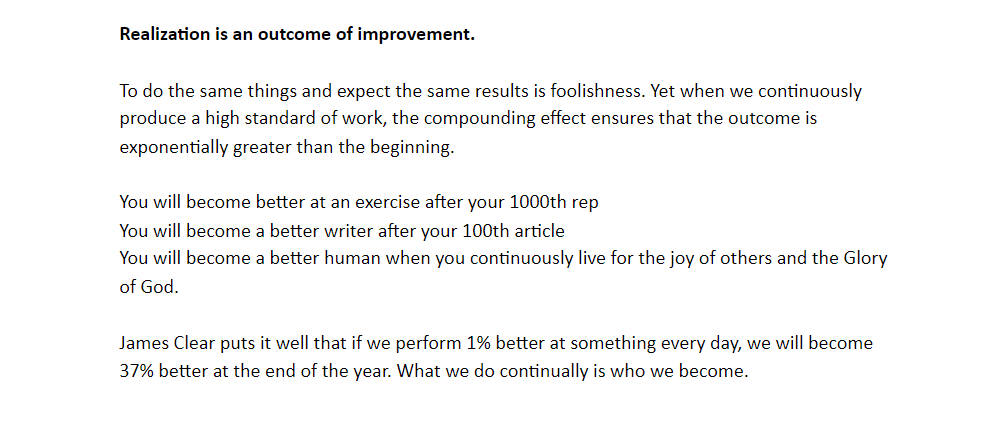Hey guys, a big welcome back to the writing with AO newsletter! It’s exactly a month since the last issue, so I brought all the goodies today. Buckle your seatbelts, it’s going to be one heck of an educative ride. If you’re reading this but haven’t subscribed, join 320 amazing writers by subscribing here!
In the first part of this series, we talked about the foundation of all good writing habits, which is the prewriting system — everything you do to enable you to keep a bank of content ideas.
That’s all good until there’s a personal or national crisis like we experienced in Nigeria. Your routine is now a mess. You feel mentally drained and you have no desire to write or publish. I’m learning that for most people, the bane of writing is actually in the act of writing itself.
I want to help you. In this part, we'll take a dive into a writing process that can enable you anywhere you’re in the world and at any time, go from idea/emotion to the first draft.
Part three will then cover the process of moving from draft to publication and the final part, we’ll bring it all up together to build a solid writing system that can counter any writing challenge you can possibly face. Whoooo I’m pumped! So by the end of November, no matter your skill level, if you follow along and replicate these processes and system — writing and publishing will be as frequent as brushing your teeth. (If you brush your teeth, weirdo)
One of the biggest problems we face as writers is our work is too sporadic. When we have an idea for a topic or we want to be productive and publish, we start from scratch. This is not a problem when there’s enough inspiration, but as we’ve seen, inspiration is unreliable.
If we have to start from base one every single time, we leave a large entry point for all the forces to rise against us. Even when we beat the initial resistance, frustration looms large when we get stuck at a point. It's like playing a video game but never mastering the controls.
Writing is hard work and to be consistent, we need to take away the pressure while making it as seamless as possible. Enter the writing process. The aim of this process is to trick yourself into being ‘unaware’ of writing while simultaneously making progress on a draft. We want to make the giant called writing as invisible as possible.
To make this practical, Instead of telling you to do this and that, I’m going to attempt to write a 1000-word draft using a process I’ve researched from the very best authors on the internet. The draft is going to be unrelated to what I usually like to write about, to prove this process works even when you’re out of your depth. It’s obvious. If it works, you know it works and you can replicate. If it doesn’t you won’t be reading this newsletter. Let’s dive in. Brace up friends, this is a class in session.
Step One: Find your objective
The goal here is to come up with a theme and an objective for your first draft. Yes, notice I say theme and not topic. Trying to come up with a topic when you don’t have an argument is futile. You’re not even sure of what you want to do and you’re already narrowing your options. That’s exactly what a topic does. Narrows.
If you do this, frustration! And you’re out of the chair in no time. But with a theme, you’re looking for a playground to jump in and find all the toys. The options are endless, you can go left, right, or full circle. Whichever option you take will then lead you to find an objective that your draft will be built upon. Good writing is focused-thinking.
A) Generate Ideas to find a theme.
In part one, we already broke down the best system for generating content ideas and you may want to revisit that if you haven’t built yours. A quick refresher on the three best ways to generate ideas:
Pay Attention: The most interesting moments are found in unexpected and mundane events.
Read wide: What you create is an outpour of what you consume.
Note-taking: You don’t need creativity, you need a bank of notes.
In my case, I’ll be checking my notes for an obscure idea and then search for any related content to the idea. This way I’m building a foundation to build a theme upon. For this experiment, I’m playing around with the idea of ‘finding our potential.’
Here’s what my draft looks like at this stage:
B) Build an Objective to find a specific argument or question.
Now I want to start ruminating on the theme to find an objective. At this stage, questions are important. What does this theme possibly say? Where can I run with this? What insight can I generate? Is there a story that drives any motive?
To find an objective, Julian Shapiro recommends using any of the following aims to focus your thinking:
Open people’s eyes by proving the status quo wrong.
Articulate something everyone’s thinking about but no one is saying. Cut through the noise.
Identify key trends on a topic. Then use them to predict the future.
Contribute original insights to a field through your research and experimentation.
Distil an overwhelming topic into something approachable.
Share a solution to a tough problem.
Tell a suspenseful or emotional story that imparts a lesson.
In the case of this draft I’m writing, I recall a sermon I listened to where the pastor said he was told he had potential many years ago after preaching to a small crowd of people. He embraced it and thought it a nice compliment. A few years later, another man told him the same thing and he questioned himself if, at that moment, he ought to have realized his potential. The compliment begged this question: “Does my potential today mean I haven’t gotten to a place of optimum performance?”
This story meets the last objective in the list above and I can now run with it. Are you following me, friend?
Here’s a snapshot of my objective:
After finding my objective, this is what my draft now looks like:
If you’re still struggling to find an objective after reflecting on the theme and answering multiple questions, turn to research. Consume a diverse range of content in relation to the theme to find a sticking point. Usually, this would be the most intriguing information that strikes you. When you find it, get out of the research lab before procrastination hits.
Step Two: Prepare an Outline
This is going well! I’m excited to write the draft right now because I have an objective to run with. So I’m just going to hop in and start the draft! NOPE. Too soon. Again, remember that we want to avoid the frustration that is in the corner, prowling like a hungry lioness ready to devour us if we get stuck while writing.
We must gain an advantage by continuing to ‘avoid writing’ while making progress on the draft. How do you do this? By preparing an outline. The goal here is to get anything interesting, surprising, wrong, false—absolutely anything that relates to your objective—onto the page that you can then combine into proper flow and structure. To prepare an outline, brainstorm ideas without structure, conduct research, then outline your most persuasive points.
A) Brainstorm without structure:
Disregard any rule you’ve ever heard about writing here and just let the floodgates of your mind run wild on the screen. Top online writers like Packy Mccormick go super deep during the brainstorm session. He advises you “Find everything that's been written or said about that topic, immerse yourself, make sure that you're saying something unique that other people haven't said. And then just write”
At this point, I’m taking a break from writing this newsletter to brainstorm on my draft. I’ll try to answer the questions I raised in the objective, think critically, and reflect on any prior experience I may have that connects to the objective.
During brainstorming, use parentheses to identify places where you need to input facts, images, a better argument, etc. This is not the stage for perfection. Anything that disturbs the flow, drive it into the abyss of a bracket. You can also highlight statements you want to expand as well.
Here’s a paragraph from my brainstorming session:
B) Conduct Research
I then conducted research on Google. I typed in questions like:
“When is our potential a good thing”
“How do we measure potential”
“How do we recognise your potential”
My aim here is two-fold: What does the current media say and what new perspective can I bring? In the process, I learned two things. Most media say you can measure potential through scientific action and you can realize your potential by taking actionable steps.
These findings are awesome! Because now I can build my argument by countering scientific (and unproven) facts with a new argument. I can also help normal people measure their potential through the method my draft is built on. Man! This opens so many opportunities that I can delve deeper into and write a 5000-word essay on. While brainstorming, I can put brackets in spots where I want to counter or build arguments based on evidence. This enables me to continue brainstorming without interference.
Also, while researching, when I find any content that I want to reference in the final draft, I’ll copy the link and put it in a separate box so I can easily refer to it at a later stage. At this point, I haven’t even technically started to write—but I’m already 800 words in. We’re winning the war.
There are many ways to conduct research apart from search consoles. Running your theme by a friend is a great way to get new ideas and know what is feasible and what isn’t. You can also use social media networks like Twitter to run polls, ask questions, or a thread and find out what people are leaning towards. The opportunity to expand on your objective is endless. Writer’s block can kiss my ass.
Here’s a snapshot of a paragraph I wrote after conducting research:
C) Outline your Points:
Nat Eliason, in 21 ways to become a better writer, says he writes an outline and continues adding to it until it’s too painful not to start writing the first draft, or until he’s written the entire first draft within the outline.
Now that you’ve done the hard work of filling your screen with enough ideas to form the first draft, it’s time to outline them. This way, when you start ‘writing’, your work will be in a constructive structure and flow from one point to another.
It’s important not to confine yourself into a box here. You simply want to go through your brainstormed note, then outline the points that are most persuasive to the objective. If more ideas come to you, that’s perfect.
“The outline should be specific enough to provide structure, but loose enough to not confine new thinking. Whenever we feel a tug pulling us away from the outline, we must indulge curiosity and pursue that adventure. We will not hesitate to change direction on the fly.”- Julian Shapiro.
Here’s a snapshot of my outline for the ‘paradox of potential’:
Here’s how my draft looks after Brainstorming and Writing an Outline:
Step Three: Write a Draft!
We’re on to something. 800 words in and we’re about to write. LMAO. The hard work has been done. All we want to do now is use our outline as a framework to flesh out the first draft and convince ourselves we haven’t wasted the hours it took to get here. It’s been fun! I’ve literally gamified writing up to this point.
We’re still not aiming for perfection here. The goal is a full piece that we can revise and edit and share with the world. Depending on what you brainstormed and the outline you wrote, at this stage, you’re doing the work of expansion. We’re still having fun but now it comes with direction. So copy the best out of your earlier brainstorm, infuse it into your outline, and fill the parentheses you opened up. Victory fellas. Victory.
Here’s an extra paragraph I added to the first draft:
Remember that you can write as many drafts as you please till you’re satisfied to move into the second phase.
“I’m writing a first draft and reminding myself that I’m simply shovelling sand into a box so that later, I can build castles.” — Shannon Hale
Finally, Write an Outro
Depending on the flow of the first draft, we can write an outro now or wait until it’s time to revise and publish. The major aim here is to either remind the readers of the reason you wrote the draft in the first place, leave them with a decision to make, or provide the exact next steps they can take.
A great way to do any of this is to highlight your most persuasive point of the main objective.
Samantha Engman of ‘bid4papers’ highlights five ways to write a perfect outro:
Restate the objective by making the same point with other words (paraphrase).
Review your supporting ideas.
Summarize all arguments by paraphrasing how you proved the thesis.
Connect back to the draft hook and relate your closing statement to the opening one.
Combine all the above to improved and expanded conclusion.
Here’s a snapshot of my outro for ‘the paradox of potential’:
My first draft is 95% complete! Here’s how it looks, from idea to outro:
There you have it! I just wrote a 1000-word draft from an idea I picked out of the clouds. It’s possible, guys. It has taken me about six hours to write this newsletter and the draft simultaneously, so altogether about 3500 words. I’m quite impressed with how this turned out but more importantly, I hope I’ve shown you it works.
What a ride this has been! If you’re reading this, congratulations! You just learnt a process to help you write a draft at any point in time. Keep working on this, keep iterating. Switch things around.
Maybe you'd prefer to do research after an outline or whatever works for you. The point is to build a process that, come hail or snow, it’s repetitive to the point of seamlessness.
Please reach out to me if you have counter opinions or suggestions. Love to hear your take on how practical/useful this newsletter is.
Wins for the Community: Nathan wrote a fantastic guest post for ‘Coshedule’ and I’m more than glad to share it with you. ‘Coshedule’ is one of the biggest marketing companies in the world. Opportunities abound to writers like never before in this internet economy. Hope this encourages you to improve and put yourself out there consistently.
Toyin also started her life blog! You can check it out using this link. Man I’m so proud of this community
Till next time,
Keep writing,
Ayomide.
PS: The best way to support this free newsletter is to share it with someone. If you enjoyed this lesson, please use the button below to share!



